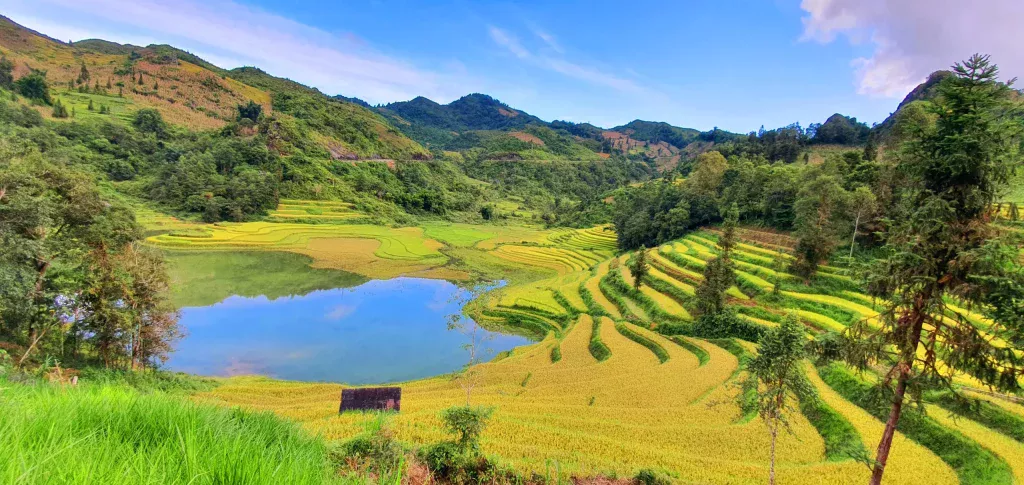What is Sustainable Tourism?
The concept of “sustainable tourism” originates from the 1987 Brundtland Commission’s report, Our Common Future, which defines sustainable development as “meeting the needs of the present without compromising the ability of future generations to meet their own needs.” Building on this, sustainable tourism applies these principles to the tourism industry. In 2005, the World Tourism Organization (UNWTO) and the United Nations Environment Programme (UNEP) formally defined sustainable tourism in their report Making Tourism More Sustainable as: “Tourism that meets the needs of travelers while minimizing negative impacts on the environment, culture, local communities, and delivering long-term economic benefits.”
This concept rests on three main pillars:
- Economic: Generating employment and income for local communities, ensuring the tourism industry is self-sustaining without overexploiting resources.
- Social: Respecting and preserving local culture and traditions while improving the quality of life for indigenous populations.
- Environmental: Minimizing pollution, protecting ecosystems, and using natural resources responsibly.
The concept has since expanded to address new challenges, such as climate change and community rights.

Sustainable Tourism: From Initial Concept to the Present
Initially, sustainable tourism focused on addressing issues like environmental degradation (e.g., deforestation, marine pollution) and cultural erosion (e.g., over-commercialization of heritage sites) caused by mass tourism. It emphasized balancing short-term benefits for tourists with the long-term viability of destinations. Over time, the concept of sustainable tourism has evolved to respond to global changes in environmental awareness, economic challenges, social issues, and climate concerns.
Foundational Phase (1980s–1990s): Sustainable tourism emerged to counter issues like environmental degradation and cultural erosion driven by mass tourism. Initially theoretical and lacking specific standards, it was primarily promoted by international organizations rather than widely implemented in practice.
Formative Phase (2000s): This was a pivotal period, transforming the concept from theory into policy guidance. The global tourism boom led to issues like “overtourism” (e.g., at Machu Picchu or waste on Everest). In 2005, UNWTO and UNEP’s Making Tourism More Sustainable report formalized sustainable tourism with its three pillars (economic, social, environmental). The Global Sustainable Tourism Council (GSTC) criteria (2007–2008) provided standards for businesses and governments (e.g., wastewater management, cultural heritage preservation). This marked a shift from theory to policy, with the industry increasingly focusing on community benefits alongside environmental protection, as seen in Costa Rica’s ecotourism programs combining education and economic benefits for locals. However, implementation remained voluntary and not yet mainstream.
Expansion Phase (2010s): Sustainable tourism shifted from “minimizing harm” to “creating positive benefits.” In 2017, the United Nations declared the International Year of Sustainable Tourism for Development, linking tourism to the 17 Sustainable Development Goals (SDGs). The 2015 Paris Agreement and certification programs like EarthCheck and Green Key gained traction, promoting low-carbon tourism. Destinations like the Maldives began marketing “low-carbon tourism.”
Current Phase (2020–2025): Reorientation and Regeneration
The COVID-19 pandemic (2020–2022) paralyzed the tourism industry, and alongside climate crises and social inequalities, it spurred restructuring. “Regenerative Tourism” emerged from 2023, emphasizing tourism that not only sustains but regenerates, such as reforestation in the Amazon or revitalizing Maori culture in New Zealand. Technologies like Big Data, AI for predicting tourism impacts, and blockchain for transparent supply chains have gained prominence. The GSTC criteria (updated 2024) now organize sustainable tourism into four pillars: sustainable management, socioeconomic impacts, culture, and environment, serving as a global practical guide.
Though relatively new in the history of tourism, sustainable tourism has evolved from a basic idea of resource protection (1980s) to a comprehensive strategy integrating climate, technology, and social equity (2025). Initially a response to negative impacts, it now aims to make tourism a tool for global improvement.
Green Tourism, Ecotourism, and Sustainable Tourism
Relationship Between the Three Concepts
- Green tourism is a subset of sustainable tourism, focusing solely on environmental aspects without necessarily addressing economic or cultural issues.
- Ecotourism also falls under sustainable tourism but is limited to nature-related activities and conservation, excluding broader urban or cultural aspects.
- Sustainable tourism is the overarching concept, encompassing green tourism and ecotourism while extending to areas like social equity, long-term economic development, and regeneration.
Direct Comparison
| Criteria | Green Tourism | Ecotourism | Sustainable Tourism |
| Main Focus | Environment | Nature and conservation | Environment, economy, society |
| Scope | Narrow (environment only) | Medium (nature-focused) | Broad (holistic) |
| Destination | Anywhere | Primarily natural areas | Anywhere (natural + urban) |
| Objective | Reduce environmental impact | Conserve ecosystems, educate | Long-term development, balance |
| Example | Plastic-free hotels | Rainforest tours | Community-based tourism projects |
The “Swiss Tourism for Sustainable Development in Vietnam” project (ST4SD, 2024–2027), funded by the Swiss Government through the Swiss State Secretariat for Economic Affairs (SECO), collaborates with the Vietnam National Administration of Tourism (VNAT) and the provinces of Hà Giang, Quảng Nam, and Đồng Tháp. ST4SD focuses on policy, human resource training, and enhancing sustainability for destinations and businesses, aligning with Vietnam’s tourism strategy to 2030. It promotes green homestays in Đồng Tháp and Hà Giang, nature conservation through renewable energy, and green destinations in Quảng Nam. This marks a significant step, not only reducing negative impacts but also regenerating resources and communities, reflecting current global trends.